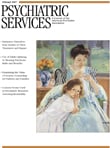The book Medicines Out of Control? is a passionate argument for reframing the way medicine, the pharmaceutical industry, and governments relate to each other and to the consumer in the development, evaluation, prescription, and marketing of medicines. In over 200 pages of very small print spanning 11 chapters that are loaded with footnotes, the authors confront the pharmaceutical industry, its regulators, and the medical community. Charles Medawar has had a long career as a public advocate and is the director of Social Audit, a British offshoot of Ralph Nader's Public Citizen Network. Anita Hardon is a professor in the Medical Anthropology Unit of the Anthropological Sociological Center at the University of Amsterdam.
Medical service providers, medical scientists, and advocates for people with mental illness could find this book worth reading and the issues that it raises worthy of careful consideration. However, it is a whistle-blower's tale, and, as such, it offers a one-dimensional view of issues and events. Readers who believe that economic and political forces have compromised medicine and medicines will find support for their conclusions here, although those who are looking for a more balanced view had best look elsewhere.
Several themes emerge in the book. For one, all the mood-altering medicines, from the earliest to the most recent, produce both physical and social dependence. Also, secrecy in the industry and among its regulators stands in the way of timely publication of medication problems. The authors also say the pharmaceutical companies are reaching the end of their ability to innovate, and in order to survive they have shifted from developing new drugs to marketing those that are already in the pipeline. In addition, direct-to-consumer advertising illustrates their success in commercializing medicine and medical research; pharmaceutical regulatory systems are dysfunctional or inadequate, and their reliance on premarketing trials and reluctance to emphasize postmarketing surveillance and adverse drug reaction reporting are illustrative of this point. Another theme is that economic, political, and professional pressures too heavily influence medical science, which has produced biased and marginally useful drug research. And finally, medicines are the source of iatrogenic damage that extends beyond adverse reactions to a "loss of personal autonomy, reduced confidence in health and diminished opportunity for making sense of illness and disease."
One could come away from this book with the notion that there is a very unfavorable risk-to-benefit ratio specifically for mood-altering drugs and possibly for psychotropic medications in general. The authors express support for using patient outcomes to evaluate medications, but they do not take into account the thousands of lives that have been measurably improved, and sometimes saved, by these medications. There are clearly times when the advocacy of families and consumers is at odds with the views expressed in this book. This is the case for the authors' apparent opposition to the development of more effective psychotheraputic drugs as well as open access to medications chosen by a competent medical provider and an informed patient.

